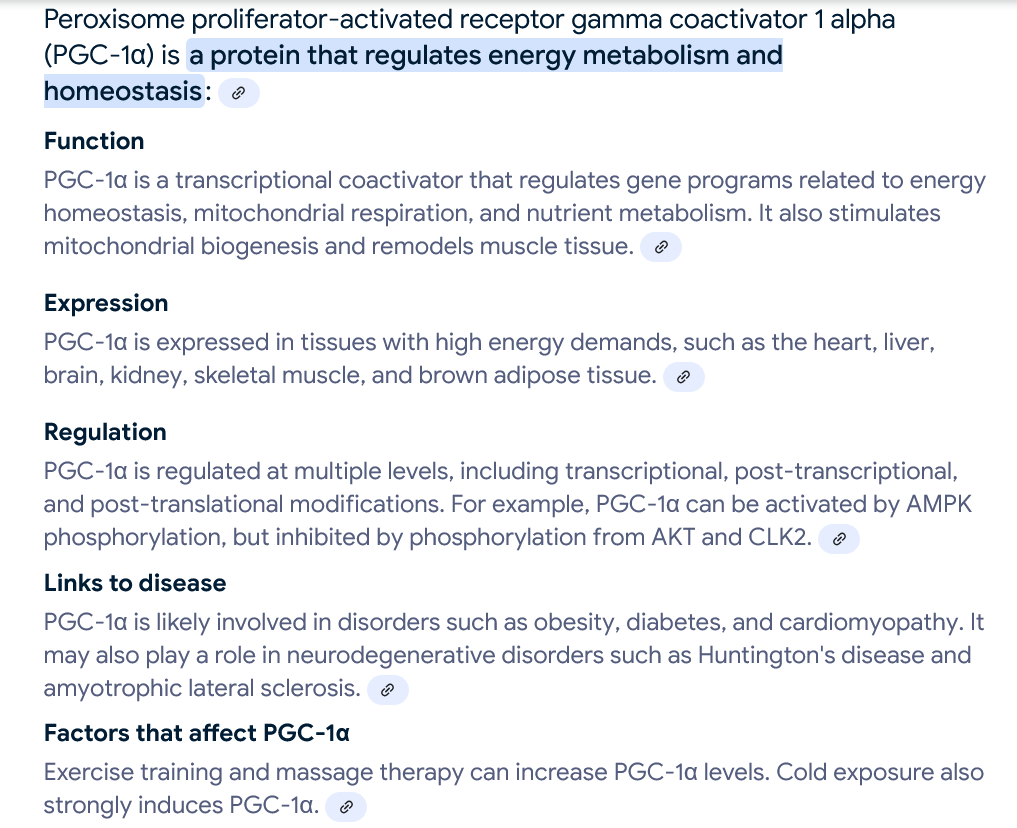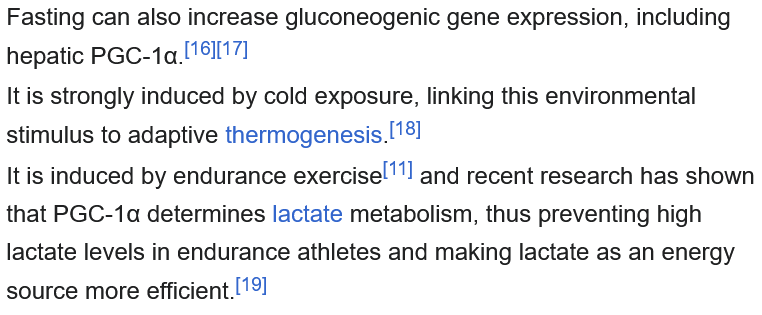These results demonstrate that the chronic pain associated with aging isn’t always attributable to a chronic condition such as arthritis. Rather, it can be attributed to an age-related decline in a crucial brain function, and future therapies that focus on restoring this function may become a key part of ameliorating this pain.
A Gradual Loss May Cause Chronic Pain | Lifespan.io
I just read this. It is very interesting. A drop in pcg1a during aging results in lower inhibition of pain sensing, so pain increases without any other influence. The good news is we already want to increase pcg1a for mitochondrial biogenesis.
Exercise — for muscles
Fasting — for liver
When I did a FMD, my body pain vanished for 2 months. I can feel it gradually coming back. It’s time for another FMD.
What’s FMD? sorry. I am not familiar with many abbreviated terms.
@francesss7ca FMD = Fasting Mimicking Diet
Here’s a link to a recent thread here on this topic.
I’m focusing on PGC-1a as a key protein.
" PGC-1α has also been shown to drive NAD biosynthesis to play a large role in renal protection in acute kidney injury."
https://en.wikipedia.org/wiki/Pparg_coactivator_1_alpha
PGC-1a is also increased when AMPK is upregulated (and mTOR1 is downregulated) so rapamycin helps (also part of mitophagy).
PGC-1a is a compound, a gene that expresses a protein, and the protein “suppresses inflammation and mediates the beneficial effects of exercise.” This forms a positive feedback loop. Exercise increases the protein, and the protein encourages more exercise by boosting energy and reducing pain. PGC-1a is responsible for what we runners call endorphins, giving us that runner’s high. As a bonus, it retards the aging process and inhibits neurodegeneration.
PGC-1a levels can also be modulated by exposure to cold, so running in winter gives me a double dose.
Fasting seems to work as well, and drugs that act on the gene are in development. I would also put the peptides epitalon, MOT-c, and SS-31 into that category. By regulating the signals to and from the gene, the peptides work on the skeletal muscles and in other cells throughout the body.

